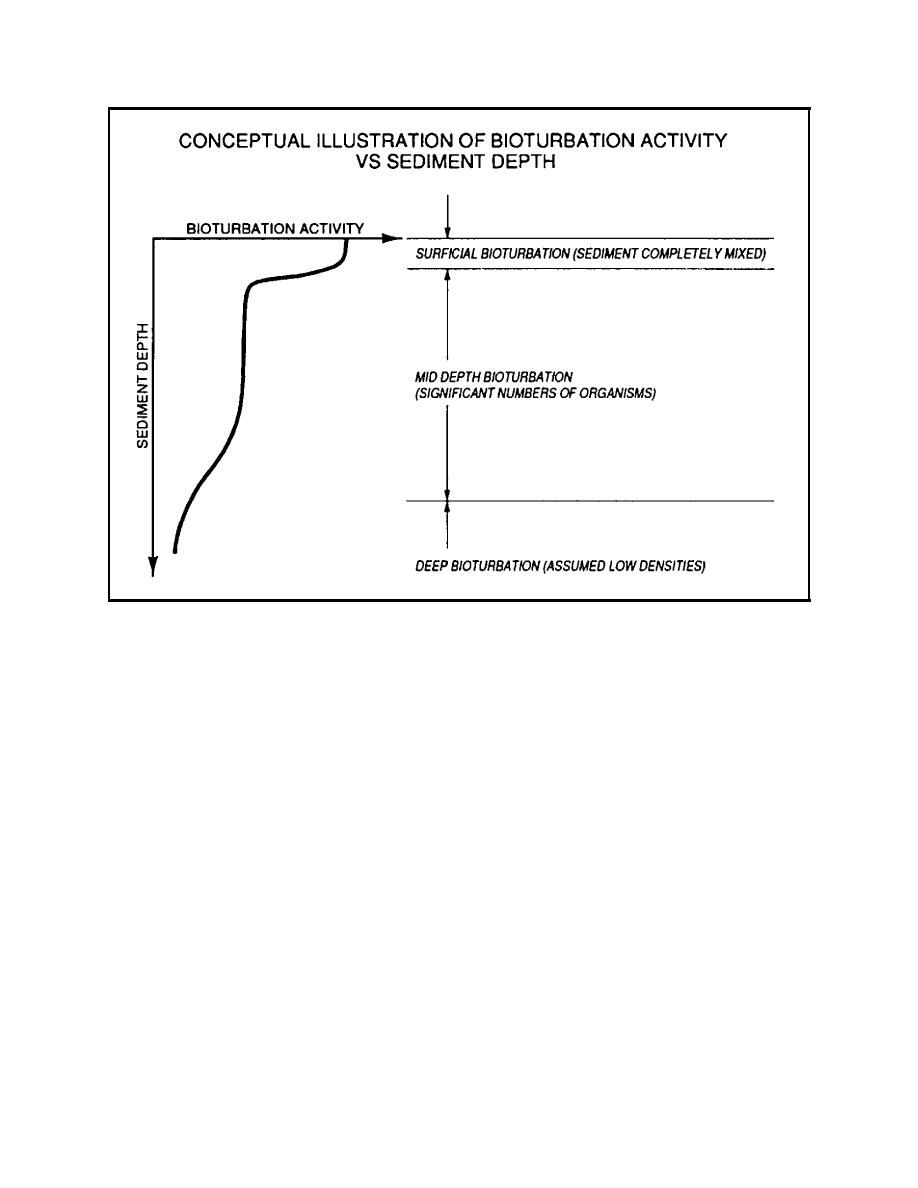 |
||
|
|
||
| |||||||||||||||
|
|
 Figure 21.
Conceptual illustration of bioturbation activity versus sediment depth
Cap thickness required for bioturbation, Tb, should be determined
based on the known behavior and depth distribution of infaunal organisms
likely to colonize the site in significant numbers. Bioturbation depths are
highly variable, but have been on the order of 30 to 60 cm (1 to 2 ft) for
most infaunal organisms that populate a site in great numbers. Consulting
with experts on bioturbation in the region of the disposal site location is
desirable. The thickness needed to prevent breaching of cap integrity
through bioturbation can be determined indirectly from other information
sources. For example, the benthic biota of U.S. coastal and freshwater ar-
eas have been fairly well examined, and estimates of the depth to which
benthic animals burrow should be available from regional authorities.
Consolidation
Consolidation of the cap, contaminated material, or underlying native
sediments may occur over a period of time following cap placement, but
does not occur repeatedly. If a fine-grained cap material will be used, con-
solidation of the cap may require an added cap thickness component in the
design such that the consolidated cap will remain at the required thick-
ness. If any of the sediments (cap, contaminated, or native sediment) are
compressible, a prediction of consolidation is important in interpreting
69
Chapter 7 Dredged Material Cap Design
|
|
Privacy Statement - Press Release - Copyright Information. - Contact Us - Support Integrated Publishing |